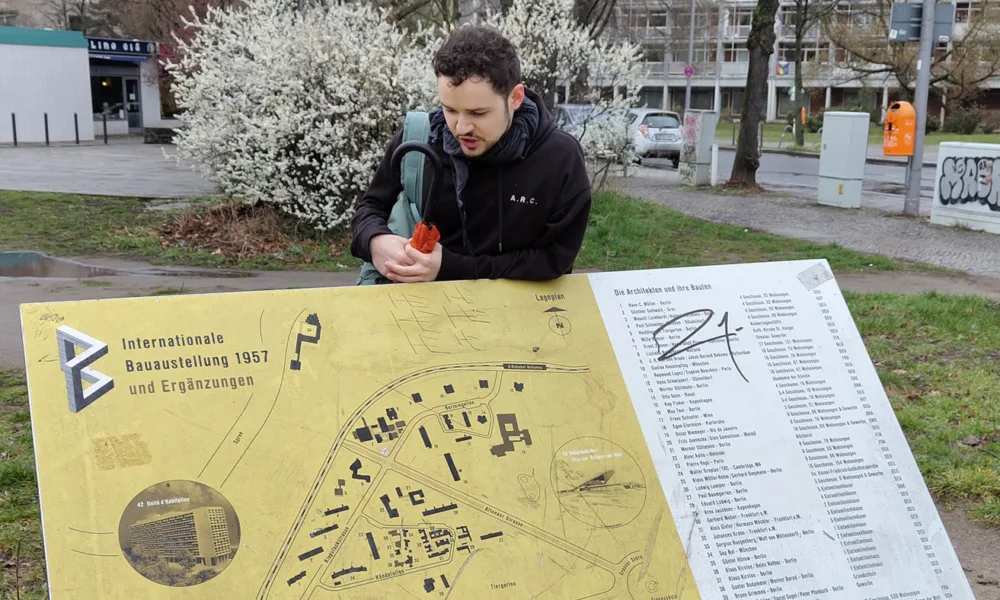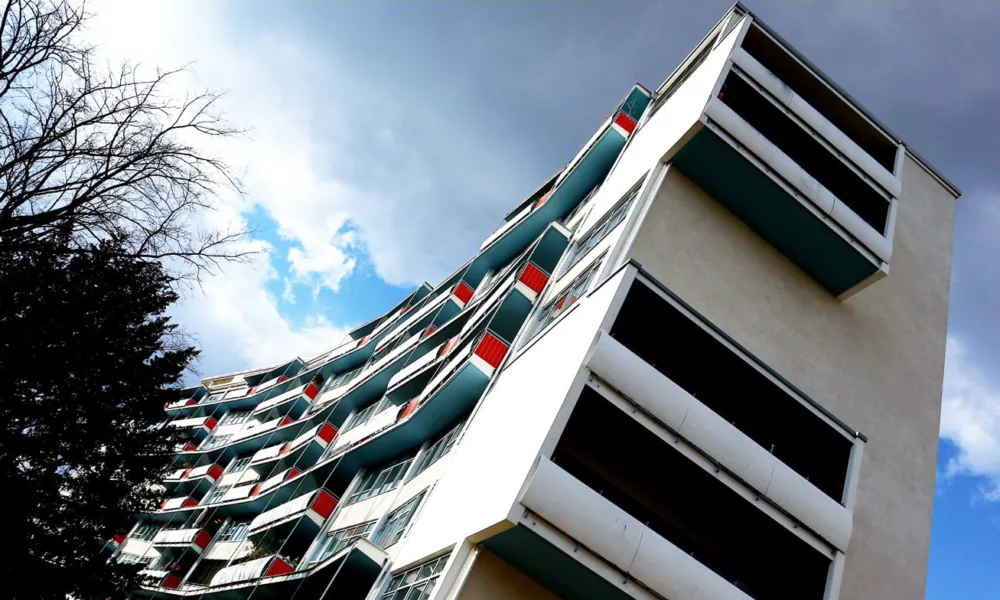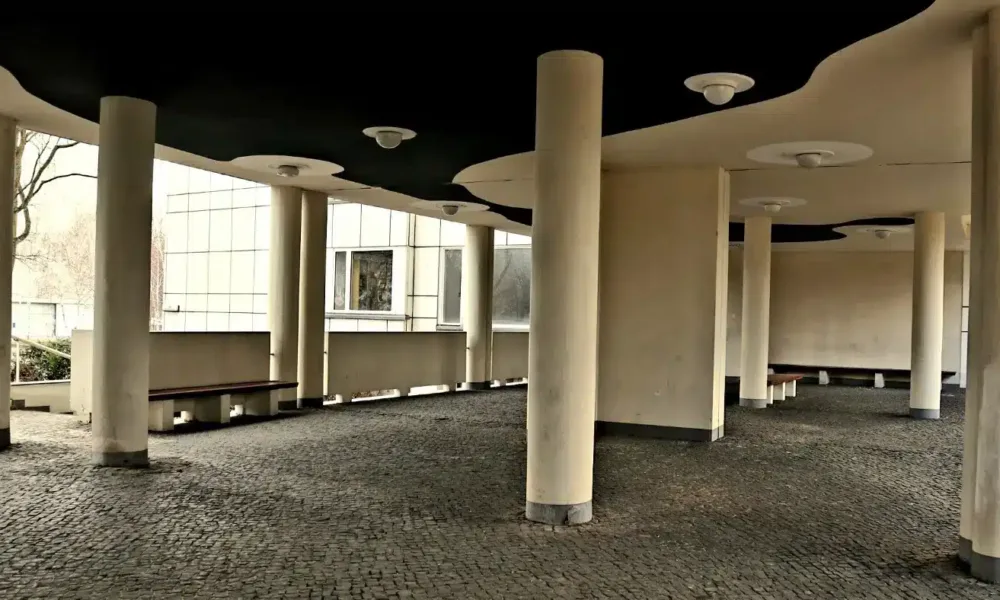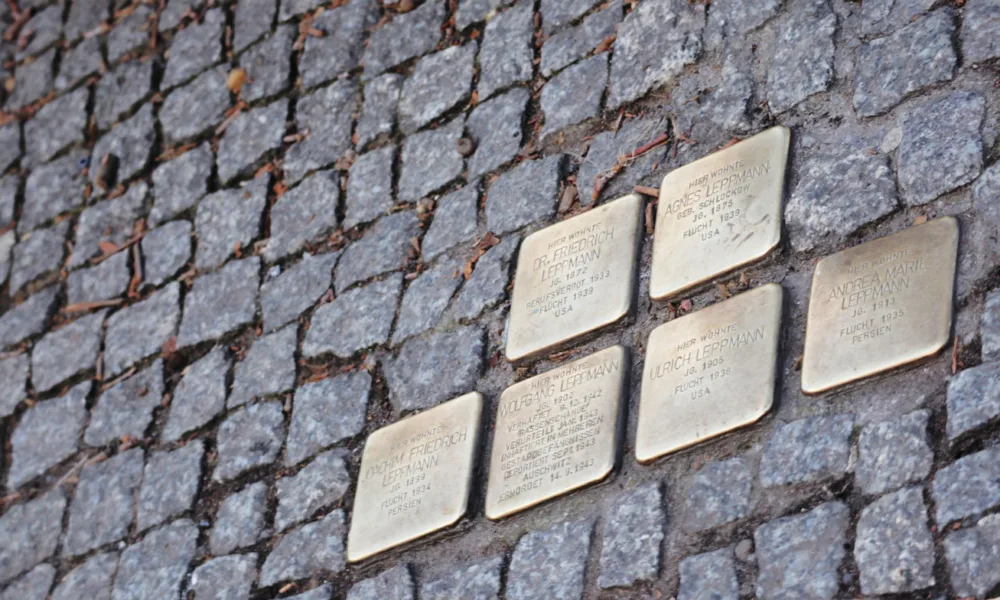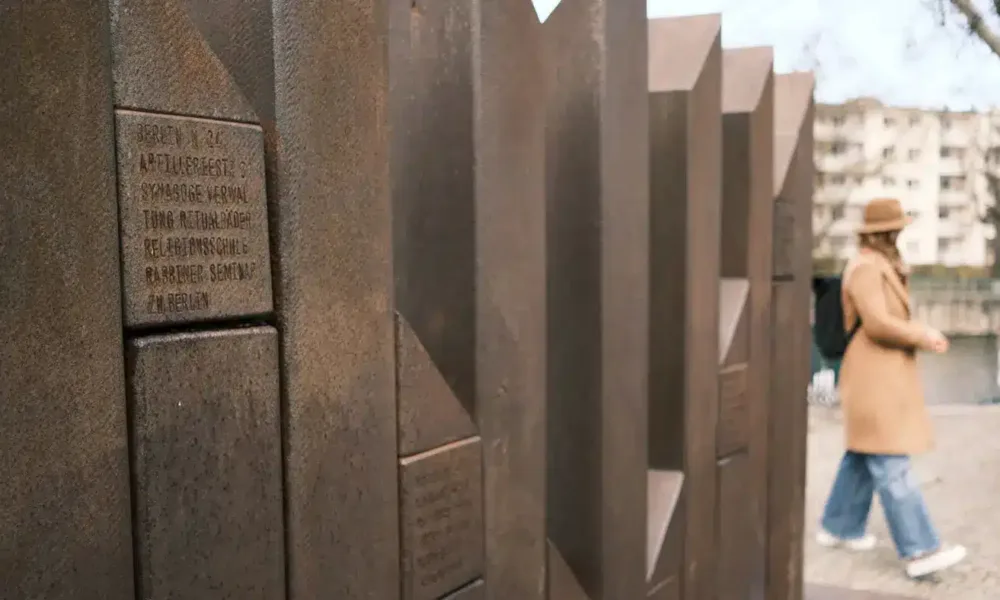Hansaviertel: A Design for Life
Step into one of Berlin’s boldest architectural experiments — from 19th-century elegance to radical postwar modernism, this walking tour through the Hansaviertel reveals a striking vision of urban living shaped by Berlin’s turbulent history.
Price + VAT 19%:
25,00 € regular
20,00 € discounted
Meeting Point:
In front of the Berlin-Tiergarten S-Bahn station (Exit Siegmunds Hof / Bachstraße), next to the beer garden “Biergartenquelle”. Look for our guide with the orange umbrella!
You are currently viewing a placeholder content from Google Maps. To access the actual content, click the button below. Please note that doing so will share data with third-party providers.
Tour in a nutshell
Tucked between Tiergarten and the Spree, the Hansaviertel is one of Berlin’s most fascinating and surprising urban experiments. On this walking tour, we trace the area’s transformation from a 19th-century riverside neighbourhood of leafy boulevards, elegant villas, and prominent residents to a postwar district rebuilt from the rubble of World War II. Once home to figures like Rosa Luxemburg and Vladimir Lenin, the area was also a centre of Jewish life before its destruction under Nazi rule and Allied bombing. In the 1950s, the site became a showcase for West Berlin’s vision of modern living. As part of the Interbau 1957 exhibition, leading architects from around the world — including Gropius, Niemeyer, and Aalto — were invited to build here. Their bold designs still shape the neighbourhood today. As we walk, we explore how different generations imagined the future of city life — and how those ideas continue to shape Berlin today.
Need To Know Before You Go
Duration: Approx. 2 hours
Group Size: Maximum 15 participants (larger groups on request; only bookable as a private tour)
Pets: Well-behaved dogs on a leash are welcome, provided they do not disturb the group. Service animals are always allowed.
Reviews
Really interesting mix between history and architecture. It’s a nice way to discover a neighborhood in Berlin that’s not so well known. The tour guide Morgan was amazing!
If you are interested in the hidden history of Berlin’s quarters, this excursion is for you! Morgan, our guide, revealed how Hansaviertel reflects the private stories of Jews, having lived in the area, the Cold War, and new architectural movements. I have been in this area several times, but now it became a special place for me.
Great tour through an interesting part of Berlin. We had lots of fun with our guide Morgan!
Want to know more?
At first glance, the Hansaviertel may seem like a quiet, green residential pocket of Berlin — but beneath its tranquil canopy lies a district that tells a much larger story about the city’s hopes, traumas, and reinventions. We begin in the 19th century, when Berlin’s population exploded and new neighbourhoods rapidly expanded. While factory workers crowded into dark tenements on the outskirts, Hansaviertel emerged as a prestigious riverside enclave — a showcase of privilege, with manicured gardens and ornate façades crafted by leading architects for the city’s rising middle class.
Behind these façades lived a cast of remarkable residents. We follow the stories of political thinkers, artists, and writers — from Rosa Luxemburg to Nelly Sachs and Käthe Kollwitz — and explore how the neighbourhood became one of Berlin’s key centres of Jewish life before the Nazi era. At a quiet corner of the district, we visit a memorial to one of Berlin’s largest pre-war Jewish communities, and reflect on how this world was shattered by persecution and war. Allied bombing raids later flattened much of the neighbourhood.
But out of the rubble came one of West Berlin’s boldest postwar experiments. In 1957, as part of the Interbau exhibition, visionary architects like Walter Gropius, Oscar Niemeyer, and Alvar Aalto reimagined the Hansaviertel as a blueprint for modern urban living — a pointed counter-model to East Berlin’s Stalinallee. Their buildings remain: a striking mix of Bauhaus clarity, concrete brutalism, and experimental housing that reflect the ambitions and tensions of the Cold War era.
As we walk, we explore not only these iconic designs but also the gap between architectural ideals and everyday life — and what this district reveals about Berlin’s changing ideas of community, space, and the “good life”.

